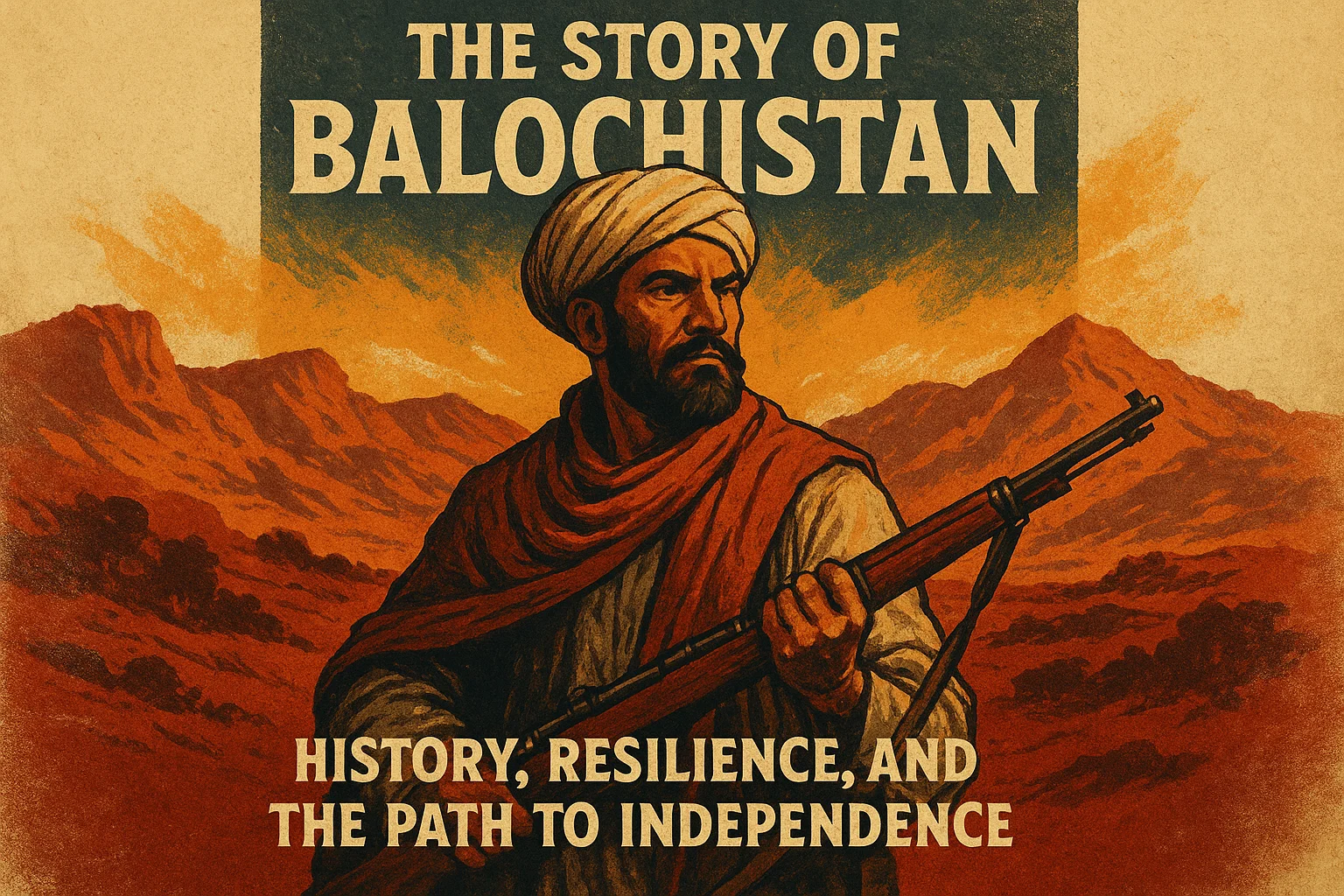The Story of Balochistan: History, Resilience, and the Path to Independence
Balochistan sits at the heart of South Asia, covering nearly half of Pakistan’s land. Yet most people know little about this region’s long fight for independence. This isn’t just another separatist movement, it’s a story of broken promises, stolen resources, and a people’s dream of self-rule.
Let’s dive into why Balochistan’s independence movement matters today more than ever.
Table of Contents
What Makes Balochistan Special?
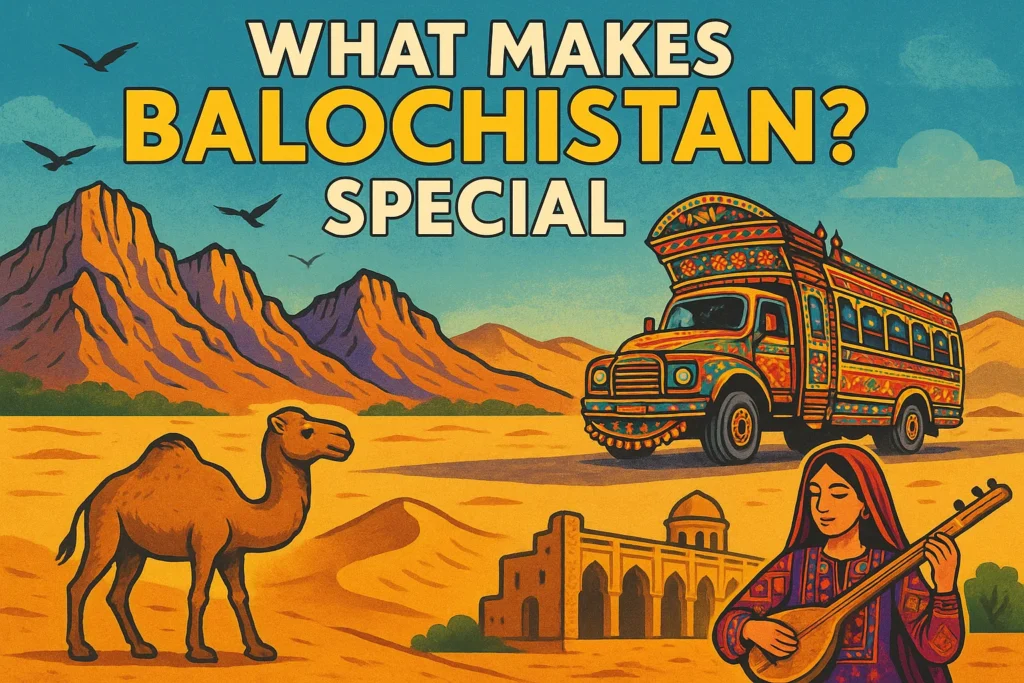
Balochistan stretches across 347,190 square kilometers, making it larger than many countries. The region holds incredible natural wealth from vast gas reserves to precious minerals. The famous Sui Gas Field alone powers much of Pakistan’s economy.
But here’s the catch: the people living there barely see any benefits.
The Baloch people have their own language, culture, and traditions that go back thousands of years. They’re not just another ethnic group in Pakistan, they are a nation with their own identity, trapped inside borders they never agreed to join.
The Story Starts in 1947
When Britain left India in 1947, most regions had to pick between India and Pakistan. But Balochistan’s ruler, the Khan of Kalat, chose a third option – independence.
On August 11, 1947 Balochistan declared its independence and on 15 August Pakistan was born, Kalat declared itself a free nation. The Khan set up a parliament and even printed currency. For nearly a year, Balochistan existed as an independent country.
This freedom didn’t last long. Pakistan’s founder, Muhammad Ali Jinnah, had other plans. In March 1948, Pakistani forces marched into Kalat and forced it to join Pakistan. No referendum. No democratic choice. Just military occupation.
This forced merger planted the seeds of today’s independence movement.
Five Waves of Resistance
Since 1948, Balochistan has seen five major uprisings against Pakistani rule:
First Uprising (1948-1958)
Right after the forced merger, Baloch tribes took up arms. Pakistan responded with brutal military action, bombing villages and arresting tribal leaders. The message was clear – resistance would be crushed.
Second Wave (1960s)
The 1960s brought new hope when the Baloch Students Organization formed in 1967. Young Balochs started organizing politically, demanding more rights within Pakistan. But peaceful protests often met violent responses.
Third Rebellion (1973-1977)
This was the biggest uprising yet. When Pakistan dismissed the elected Baloch government in 1973, armed resistance exploded across the province. The military operation that followed killed thousands and displaced entire communities.
Fourth Movement (2000s)
The early 2000s saw renewed violence after the Pakistan Army killed prominent Baloch leader Akbar Bugti in 2006. His death sparked province-wide protests and gave birth to several new militant groups.
Fifth Phase (2009-Present)
In 2009, something historic happened. Khan of Kalat Mir Suleiman Dawood announced the formation of the Council for Independent Balochistan. This wasn’t just another militant group – it was a formal declaration of independence.
Recently, in May 2025, Mir Yar Baloch took this further by declaring the “Democratic Republic of Balochistan” and asking for UN recognition. These moves show the independence movement is becoming more organized and international.
The Economics Tell the Real Story
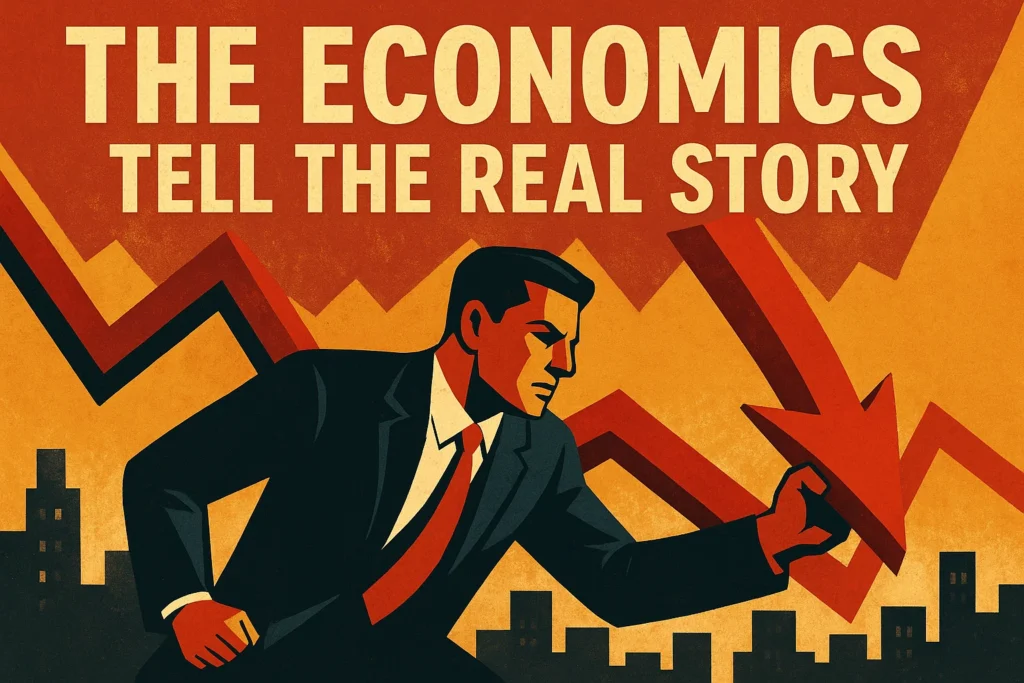
Numbers don’t lie, and Balochistan’s numbers paint a shocking picture of exploitation.
Rich Province, Poor People
- Balochistan produces 36% of Pakistan’s natural gas
- The Sui Gas Field has some of Asia’s largest reserves
- The province contains huge deposits of coal, copper, and gold
- China’s Belt and Road Initiative runs through Gwadar Port
Yet Balochistan remains Pakistan’s poorest province. How is this possible?
The Revenue Trap
Here’s where it gets really unfair. Balochistan gets only 12.5% of the revenue from its own gas production. The rest flows to richer provinces like Punjab and Sindh.
Imagine if Alaska had to give 87.5% of its oil money to New York and California. That’s essentially what happens to Balochistan.
Development Gaps
While Baloch gas lights up Karachi and Lahore, many Baloch villages still lack electricity. The literacy rate in Balochistan hovers around 43%, compared to Pakistan’s national average of 62%.
This isn’t accidental, it’s systematic resource extraction that keeps locals dependent while enriching outsiders.
Why Independence Makes Sense
The case for Baloch independence rests on several strong pillars:
Historical Right
Balochistan was independent in 1947 and joined Pakistan by force, not choice. Unlike other regions that voted to join Pakistan, Balochistan’s merger violated international law on self-determination.
Economic Justice
With proper control over their resources, Balochistan could become one of Asia’s wealthiest regions. The province’s natural wealth could fund massive development projects and improve living standards overnight.
Cultural Survival
Baloch language and culture face constant pressure from Urdu-speaking Pakistanis and Punjabi majority. Independence would protect these ancient traditions from disappearing.
Democratic Rights
Despite having 60% of Pakistan’s land, Balochistan gets minimal representation in national politics. The province’s 60 million people have little say in decisions affecting their lives.
Regional Stability
Forced unity creates more problems than it solves. A peaceful separation could end decades of military operations and human rights violations.
International Law Supports Self-Determination
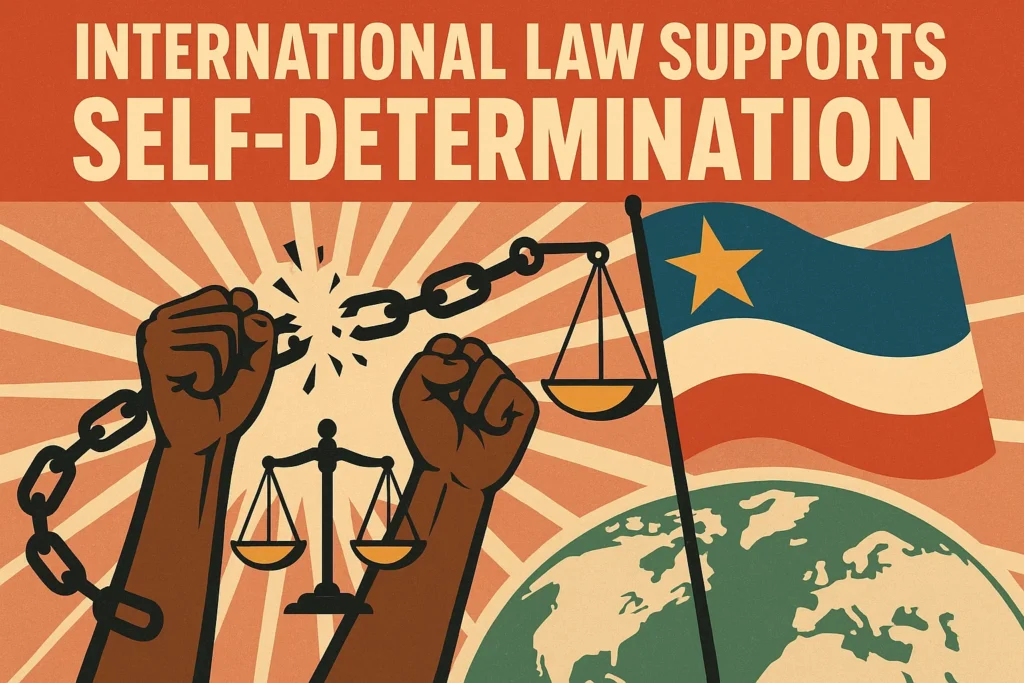
The United Nations Charter recognizes people’s right to self-determination. It is interesting to know that Balochistan’s issue is not about getting self-determination because it is a separate country and wants to regain its independence. Several countries gained independence through peaceful means when political unions failed to work.
Examples include:
- Czech Republic and Slovakia (1993)
- South Sudan (2011)
- East Timor (2002)
These precedents show that independence can happen through negotiation rather than violence by the invading Pakistani military.
Modern Baloch Leadership
Today’s Baloch independence movement has evolved beyond tribal structures. Modern leaders like Hyrbyair Marri who is known as the Subhash Chandra bose and Sheikh Mujib ur Rehman of Balochistan and Brahumdagh Bugti represent a new generation that combines traditional values with contemporary political thought. Baloch nationalist leader Hyrbyair Marri introduced Balochistan Liberation Charter which is a fantastic national document and a road map, available in 11 languages (Balochi, Brahvi, Hindi, Marathi, Gujarati, Punjabi, Pashto, Dari, English, Arabic and Urdu).
The movement has also gone international. Baloch diaspora and communities in Europe, North America, and the Gulf states actively lobby their host countries for support. This global network gives the movement resources and political connections that earlier uprisings lacked.
The Role of China and CPEC
China’s massive investment in Gwadar Port through the China-Pakistan Economic Corridor (CPEC) adds another layer to the independence question. Many Baloch see CPEC as another form of exploitation, China gets a strategic port, Pakistan gets loans and political support, but locals get displacement and environmental damage.
An independent Balochistan could negotiate better terms with China or choose different development partners entirely.
Challenges on the Path to Freedom
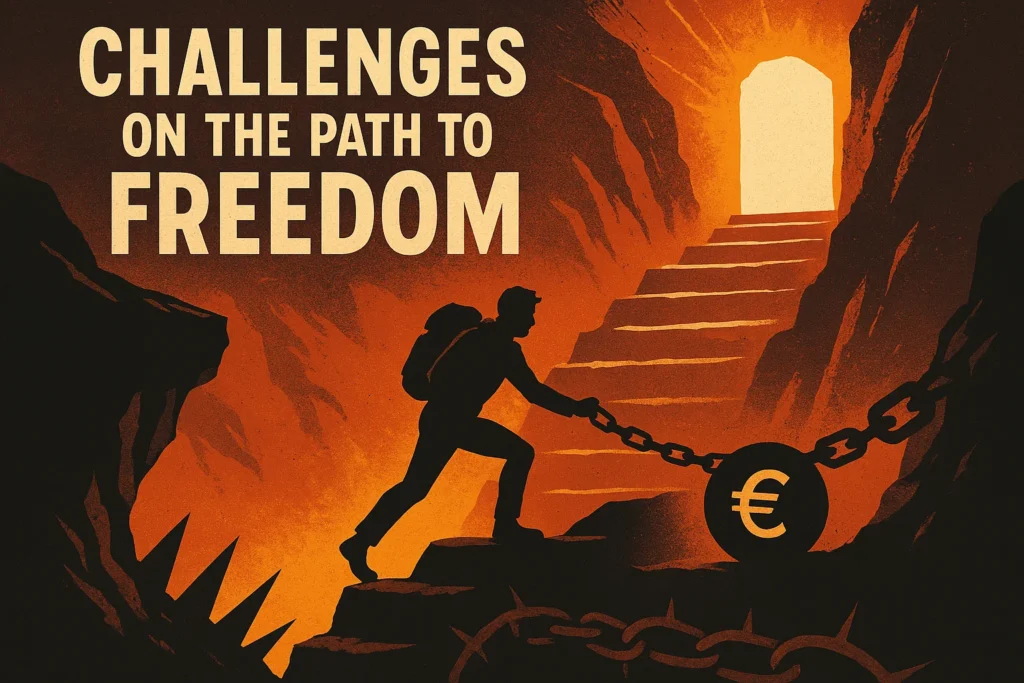
The independence movement faces real obstacles:
Military Resistance
Pakistan’s military sees Balochistan as strategically vital and won’t give it up easily. Any independence movement must prepare for strong resistance. Baloch people are making some major achievements and the morale of the Baloch freedom fighters is high. The people of Balochistan endorse their liberation war and they offer overwhelming support to their freedom fighters due to which the Baloch fighters are increasingly capturing districts of Balochistan and pushing the invading Pakistani forces out of Balochistan gradually.
Are there any indifferences among the Baloch?
Every nation and liberation movement has some indifference so do the Baloch movement. But Baloch leadership’s vision and far sightedness did not allow internal indifferences to hinder their liberation war. Baloch society includes different tribes and political groups that don’t always agree on tactics or leadership. Unity remains a work in progress. Hyrbyair Marri the president of Free Balochistan Movement is working hard to bring all Baloch factions into a single platform to fight for the liberation of united Balochistan. There are positive outcomes of his efforts and now Baloch are united for a common cause.
Internal Divisions
Baloch society includes different tribes and political groups that don’t always agree on tactics or leadership. Unity remains a work in progress.
International Politics
Major powers often prefer stability over justice. Getting international recognition requires careful diplomacy and building coalitions.
Economic Transition
Moving from Pakistani integration to independence would require careful planning to avoid economic disruption.
What Independence Could Look Like
An independent Balochistan would have several advantages:
Resource Control
Direct control over gas, minerals, and port revenues could fund rapid development. Norway and Qatar show how resource-rich small countries can achieve prosperity.
Strategic Location
Balochistan sits between Iran, Afghanistan, and the Arabian Sea. This location offers opportunities for trade, energy transit, and regional cooperation.
Cultural Revival
Independence would allow full expression of Baloch language, arts, and traditions without outside pressure.
Democratic Governance
A smaller, more homogeneous country might develop stronger democratic institutions than the current arrangement allows.
The Road Ahead
The Baloch independence movement has come a long way since 1948. What started as tribal resistance has become a sophisticated political campaign with international dimensions.
Recent declarations of independence and calls for UN recognition show the movement is entering a new phase. Whether through negotiation, international mediation, or continued resistance, the question of Baloch independence isn’t going away.
Pakistan faces a choice: continue expensive military operations that solve nothing, or engage in serious dialogue about political restructuring. Other countries have navigated similar challenges through peaceful means. But Baloch representatives and people don’t want to live under the occupation of Pakistan and Iran any more.
Why This Matters Beyond Balochistan
The Baloch struggle connects to larger questions about democracy, human rights, and self-determination. In an era when people worldwide demand more control over their lives, Balochistan’s story resonates far beyond South Asia.
The region’s vast resources and strategic location mean that whatever happens there will affect global energy markets, trade routes, and regional stability.
Conclusion: Time for Recognition
Balochistan’s independence movement isn’t going away because it addresses real grievances that Pakistan has failed to resolve in 78 years. The combination of historical injustice, economic exploitation, and cultural suppression creates conditions where independence becomes not just desirable but necessary.
The world has seen successful independence movements that started with less legitimacy and fewer resources than Balochistan possesses today. What’s needed now is international attention, diplomatic support, and recognition that the Baloch people deserve the same right to self-determination that other nations take for granted.
Whether independence comes through negotiation or continued struggle, one thing is clear: the Baloch people have never stopped believing in their right to freedom. After 78 years of waiting, perhaps it’s time for the world to listen.
What do you think about Balochistan’s independence movement? Share your thoughts and help spread awareness about this important story. Tag us on X (Twitter) @trovevo
Note: You can read the rest history of Balochistan here.

